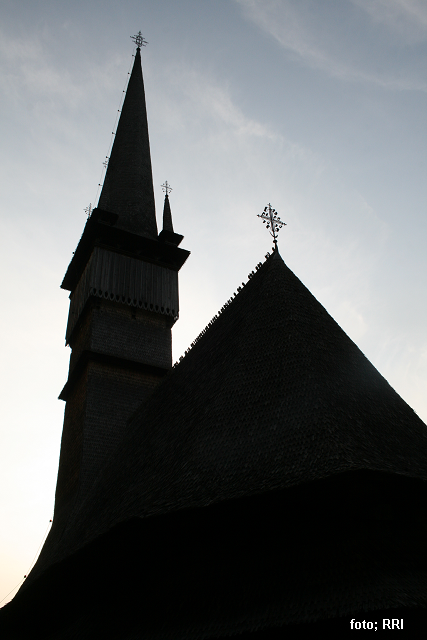The Demolition of Bucharest’s Religious Heritage
The history of the religious heritage of Bucharest in the 20th century was one of mortal blows inflicted by the communist regime

Steliu Lambru, 24.02.2025, 13:35
The history of the religious heritage of Bucharest in the 20th century, especially in its second half, was one of mortal blows inflicted by the communist regime. The heritage losses were great and irreparable, among them the famous Văcărești Monastery, the largest Orthodox monastery in Southeastern Europe, being razed to the ground without hesitation. Most of the stories of religious heritage lost between the 1950s and 1980s reveal the attitude of disdain and arrogance that the regime and its activists had towards Romania’s past. Historian Speranța Diaconescu worked at the Office for National Cultural Heritage of the Municipality of Bucharest. In 1997, interviewed by the Oral History Center of the Romanian Broadcasting Corporation, she showed how the regime treated the religious heritage that irritated it.
“Things followed an upward curve, but there was a continuum in the sense that the demolitions started from the beginning of the regime, intensifying along the way. Meaning that, with the construction of various new areas of the capital, the construction stages also included demolitions of important objectives, historical and architectural objectives, which were not protected. And this from the very beginning. There was the church at Stejarului in Palace Square, which fell when the Palace Hall and the entire housing complex there were built. This policy was continued in the 50s-60s. Only that then there were one or two, the very large scale occurring when a construction was built on a large area, the Civic Center area, a construction on an area not only large, but an area with a historical tradition for Bucharest. The area included many churches, many old houses, and at that time the loss for the historical and architectural heritage of the city of Bucharest was very great.”
The peak of contempt was reached in the 1980s, when the so-called urban systematization policy of Bucharest began. At that time, the religious heritage located in the new civic center that Nicolae Ceaușescu was building over old Bucharest was demolished or shifted. Speranța Diaconescu also remembered the case of the Pantelimon church, located on an island on the eastern edge of Bucharest, demolished in 1986.
“There were the archaeological excavations, there was the cleaning of the site, the saving of important pieces of heritage, and the actual demolition. These would be the stages. The problem was that there was the funerary monument of Alexandru Ghica and some building outlines, the church inscription from 1752, a tombstone from the 18th century, a door frame, a column from the Pantelimon Church, a stone and wood candlestick, painted and gilded, which was something special, and I think a unique one, from 1752. It was located at the head of the funerary monument of Prince Alexandru II Ghica, who also had his tombstone there. All of them were very beautifully crafted, in a fairly good state of preservation.”
The disdain for heritage was generalized, from decision-makers to simple workers. Here is Speranța Diaconescu.
“Lifting the tombstone, they found Alexandru Ghica’s sarcophagus. And then something strange and unpleasant happened. They thought of doing archaeological research with this corpse, being very well embalmed, in a lead coffin and a wooden coffin. Through the visor that the lead coffin had, it was visible that the body was quite well preserved. Carbonized, but well preserved. And then the lead coffin was opened, the wooden coffin was opened and they started to take measurements, to take off his shirt, to take off his belt to see if there was a gold medallion, or if he maybe have something made of gold under his belt. There was a whole commission present. They were very indignant that he only had a single cross and a ring. He was supposed to be a pretender to the throne of the United Principalities, he was supposed to be a personality, how could he have so little? The fact is that it was decided to take the lead coffin to the museum, because it was a museum piece, and what was left of the poor ruler was stuffed into a plastic bag and left in a bush. Because he had already begun to smell. And we had to, together with a colleague, fight with all our might to make him a rough coffin, out of some wretched boards, and to dig a grave for him. It is true, the priest also helped us with this, he was willing to give up one of the places in the church park. I also did a kind of reburial. Not necessarily because my conscience was gnawing at me, but it seemed so unfair to me for this personality of our history to suffer such a thing that I felt the obligation to commemorate him.”
In the second half of the 20th century, the religious heritage of Bucharest was trampled on literally, not just figuratively. And what stood back then remains only in documents.





























